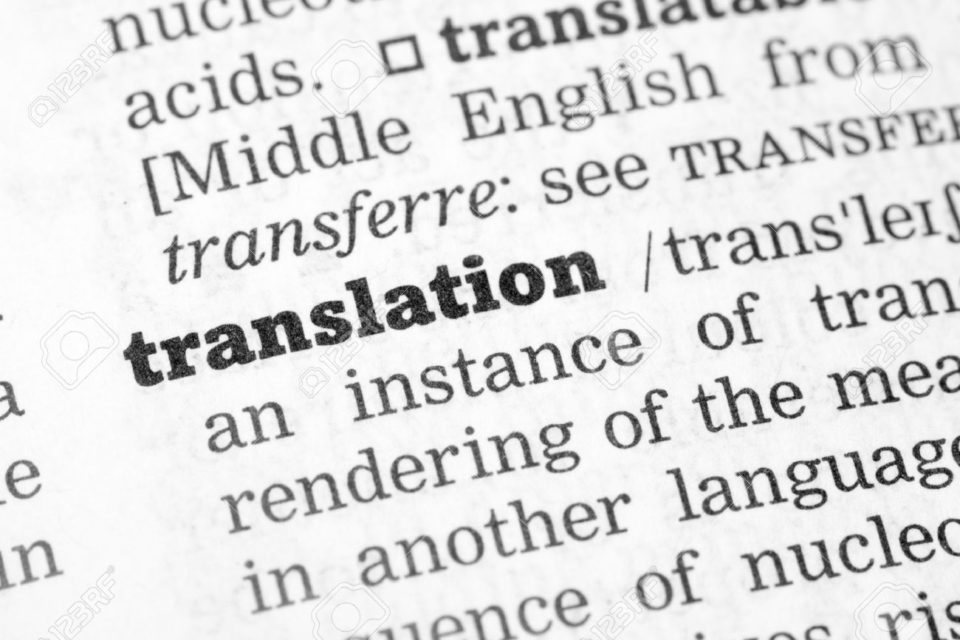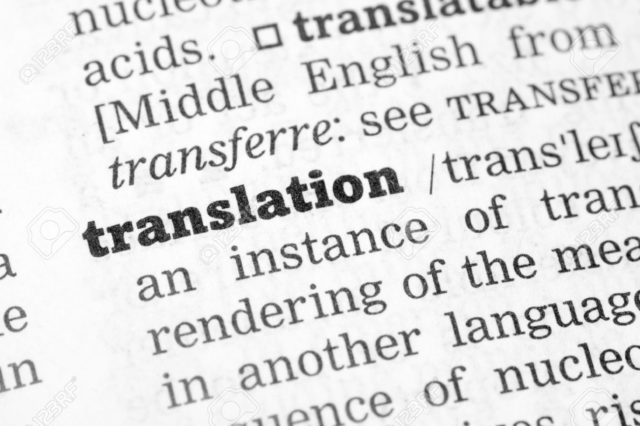[Academic Article] Proposing a simpler EFL Writing Strategies: Translation and Writing


Written by Alex Jhon, S.S., M.Hum.
In the vast world of education, English for a foreign or second language writing has established greatly in both academic and literature domains. This implication led many researchers to the admission that writing is not just about the final product but most importantly, the process of writing as well. The emphasis is not just the final output of the writing which reflects whether the produced text seem natural in both linguistic and cultural classifications. But nevertheless, the process-oriented translated text also highlight on a wide array of writing strategies within the pedagogic spectrum.
What is writing strategies and why is it important to be analyze? According to Abas & Azis (2016), writing strategies are any actions employed in the act of producing an essay that occurred during the writing process. These writing process consists of four main stages which are planning, drafting, revising and editing (Seow, 2012). Some scholars, such as Ardnt (1997), claimed that perceiving or utilizing writing strategies primarily help to separate between successful from less successful writers. Knowing how important it is now for the world of education to acknowledge the writing strategies as the conduit of better translation output, it is essential for every translators or even those who are analyzing translation process or strategies to understand about writing strategies specifically.
In doing a translation, defining a true meaning can also be translated in a translator keep the culture intact ‘by invoking a variety of perspective (cultural and linguistic)’ (Hatim, 2001, p.207). How it can be conducted is by thoroughly advising to either own L1 mental lexicon, dictionary or even any other writing strategies. Specifically in the translation study, it is indeed possible to relate translation process with writing strategies because an output of a translation text itself is conducted through the process of writing. In his study on gathering lists of taxonomies of ESL writing strategies from other scholars, Mu (2005) classified several ESL writing strategies under the cognitive strategies’ banner such as: generating ideas, revising, elaborating, clarification, retrieval, rehearsing and summarizing. Similarly, Riazi (1997) described the writing strategies the Iranian doctoral students utilized in their academic writing tasks and defined significant cognitive, metacognitive and social strategies. The cognitive strategies defined are such as revising and editing meanwhile the metacognitive strategies are planning, rationalizing and evaluation.
Other writing strategies taxonomies have also been described by many scholars, such as analyzed by Arndt (1987) in her investigation of composing activities of six Chinese postgraduate EFL students as they produced academic written texts in both their first and foreign language. In her study, Arndt described several categories such as rehearsing, repeating, re-reading, revising and others. Another scholar who also investigated ESL students, Wenden (1991) did a research on cognitive and metacognitive writing strategies. She classified planning, evaluation and monitoring as the metacognitive strategies, whereas the cognitive strategies are such clarification, retrieval, summarizing, and others.
Sasaki (2000) conducted her research on EFL learners’ writing process by using a Japanese L1 research scheme which gave information on detailed taxonomy of strategies ESL writers might use in their writing process. These strategies are such retrieving generating ideas, verbalizing, re-reading, evaluating and others. Another writing strategies taxonomy comes from Leki (1995) in her study with five ESL university students on writing demands they students encountered in their regular course. She described several strategies such as clarifying, re-reading, referring and others which are adaptable in use and can be shifted dependent on the need of suitable writing strategies.

Looking at these overly abundant writing strategies from a wide spectrum of previous studies, the researcher would like to focus on six consistent writing strategies which are dominantly or mostly mentioned from the aforementioned scholars. These six strategies are sometimes can defined similar other strategies that have the similar affection towards the writing process. These writing strategies are, in random orders:
1. Rehearsing: trying out ideas or ways to express the word within context
2. Drafting: making changes to clarify correct meaning, syntax or spelling
3. Clarifying: self-questioning and comparing to L1 or dictionary
4. Verbalizing: spoken expression on what is intended to be written
5. Repeating: rereading the already produced text; keywords or phrases
6. Evaluating: evaluating through textual and general contexts
Under the notion of generating ideas from Sasaki (2000) and trying out new ideas for a text in a context from Arndt (1987), rehearsing is the first strategies that is useful to express the possibility of word being use within a specific context. Riazi (1997) and Mu (2005) stated that drafting, the second strategy, as a cognitive strategy that consists of both revising and editing. The next strategy, clarifying was also mentioned by Mu (2005), Wenden (1991) and Riazi (1997) as cognitive strategy of comparing to L1 or self-questioning regarding the defining terms. The fourth strategy, verbalizing, is pretty significant being used in the video data of this research, such as mentioned by Sasaki (2000) in her previous study as an act of saying the content from the writer intended to write. Repeating the already produced text by either silently or loudly re-reading it is a strategy mentioned by Arndt (1987), Wenden (19910, Sasaki (2000) and Mu (2005). Finally the last strategy, evaluating the produced text through textual and general contexts has also been declared by many aforementioned scholars.
REFERENCES
Abas, I.H., & Aziz, N.H.A. (2016). Classification of L2 Writing Process and Writing Strategies. In Proceedings of ICECRS (1), pp. 367-380. Malaysia.
Arndt, V. (1987). Six Writers in Search of Texts: A Protocol-based Study of L1 and L2 Writing. In ELT Journal (41), pp. 257-267.
Hatim. B. (2001). Teaching and Researching Translation. English: Pearson Education Limited.
House, J. (2009). Translation. Oxford: Oxford University Press.
Leki, I. (1995). Coping Strategies if ESL Students in Writing Tasks across the Curriculum. In TESOL Quarterly (29)2, pp.235-260.
Mu, C. (2005). A Taxonomy of ESL Writing Strategies. In Proceedings Redesigning Pedagogy: Research, Policy, Practice, pp. 1-10. Singapore.
Riazi, A. (1997). Acquiring Disciplinary Literacy: A Social-cognitive Analysis of Text Production and Learning among Iranian Graduate Students of Education. In Journal of Second Language Writing (6)2, pp. 105-137.
Sasaki, M. (2000). Toward an Empirical Model of EFL Writing Processes: An Exploratory Study. In Journal of Second Language Writing (9)3, pp. 259-291.
Wenden, A.L. (1991). Metacognitive Strategies in L2 Writing: A Case for Task Knowledge. In J.E. Alatis (Ed.), Georgetown University Round Table on Languages and Linguistics 1991, pp. 302-322. Washington, D.C: Georgetown University Press.
